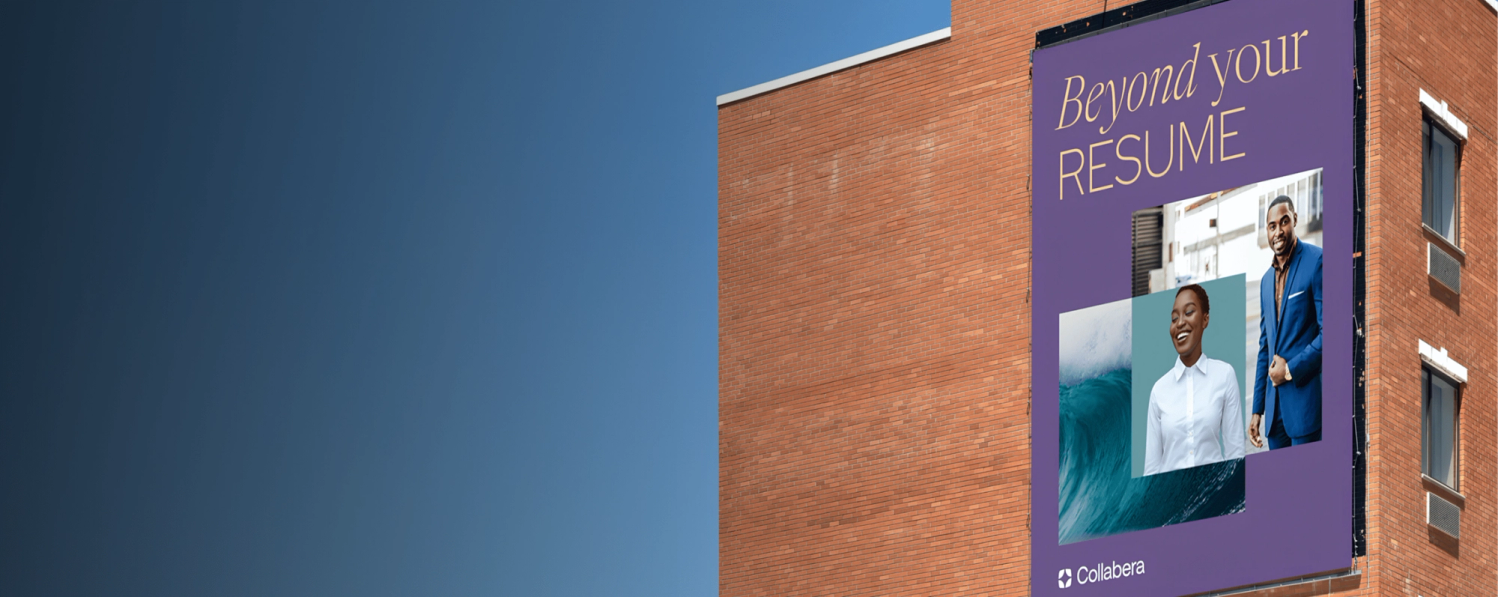
If your ad campaigns are chronically underperforming, there could be a chronological factor at play. I’m talking about ad fatigue—that moment when customers have seen your ads so many times they roll their eyes and groan. Read up on the signs, solutions and a unique metric I developed to help beat this beast.
You’re scrolling through your feed, catching up with your favorite creators. The minutes (or hours) are flying by. But suddenly, you roll your eyes and close your socials.
What happened? You’ve just seen an ad for the fifth time this hour—and it wasn’t even well-designed.
This is ad fatigue. And if you’re an avid user of social media, you’ve definitely experienced it. If you’re a marketer who works on paid ads, it’s something you have to watch out for, too.
As a Growth Marketing Specialist at Superside, I know a thing or two about the dangers of ad fatigue and have some thoughts on how to avoid it. Keep reading to better understand this ad performance killer—the warning signs, solutions and a unique metric I developed to detect (and get ahead!) of ad fatigue as it happens.
What is Ad Fatigue, Anyway?
Ad fatigue goes beyond not noticing or paying attention to an ad. It describes that moment when potential customers have seen an ad so many times they roll their eyes and groan. That can reflect negatively on your brand, impacting how your customers see any future ads, marketing efforts, or even your product.
One of the biggest causes of ad fatigue is old creative—the images and text within an ad. Thankfully, this is more often a problem with how frequently you refresh your ad creative, and less often an issue with your brand. So, while ad fatigue can have a straightforward solution, how do you even pick up on it?
Signs of Ad Fatigue
As long as you’re carefully monitoring your ad campaigns, you should be able to pick up on ad fatigue pretty quickly. You just need to know the signs.
Low CTR (clickthrough rate)
Seems obvious, right? While low clickthrough rates can signal a lot of different problems with your ads, a dip in this metric is a strong indicator you’re dealing with ad fatigue—especially if your numbers started out good and took a significant dive after a few weeks.
High CPA (cost per acquisition)
Low CTRs alone may not be enough for you to ring the ad fatigue alarm. But combine that with a high CPA, and chances are you need to take another look at your campaign. Again, if your CPA started out strong, then dipped after a few weeks, ad fatigue could be the culprit.
Less engagement (or undesirable engagement)
Getting low levels of engagement on your ads is enough to tell you they’re not really working. A decrease in engagement over time can signal their effectiveness is dwindling as well. But you shouldn’t just be looking at the amount of engagement your ads are getting. If you’re seeing your metrics get worse, take a look at how people are reacting to your ads. If you’re only getting negative or hateful comments, you may be dealing with an audience frustrated by ad fatigue.
How Do I Get Rid of Ad Fatigue?
Finding out your campaign is falling prey to ad fatigue can be frustrating. You’ve spent a lot of time and effort getting it right, and now you have to go back to the drawing board! But don’t worry—there are some simple strategies you can use to beat this beast.
Make sure you’ve nailed your targeting
Ad fatigue can be a sign some aspect of your targeting isn’t quite right. While an ad usually has to show up multiple times in someone’s feed to create a negative reaction, the frequency that triggers frustration can be a lot lower if the ad and the audience are completely mismatched. So, if you think you’re dealing with ad fatigue, dive into your ad platform of choice and see if you can fine-tune your targeting.
Revisit your strategy
Sometimes, there might just be an element or two of your strategy that’s off, and making adjustments could be enough to prevent ad fatigue for your audience. For example, maybe your static ads aren’t engaging enough on a platform like Instagram, and you need to switch things up with UGC-style videos and animation. Try asking yourself these five questions when assessing your ad strategy.
Reduce ad frequency
Most ad platforms will tell you how many times your ads are being shown to your audience. There’s usually a sweet spot where your ad is shown enough to be effective but not so much to cause ad fatigue. Showing the same ad to your audience too many times can seriously hamper your campaign’s effectiveness. Make sure to manually reduce ad frequency if it’s getting too high.
Start with multiple creatives out of the gate
One of the best ways to guarantee your campaign will cause ad fatigue is to promote a single set of creative assets. When creating your campaigns, plan for multiple creatives from the start. If you’re already halfway through a campaign, brainstorm quick, easy ways to turn one set of creatives into many. You’re much more likely to find an approach that resonates, if you’re testing more than one set of assets.
Experiment with new formats
If you’re advertising to an audience that’s already aware of your brand but hasn’t purchased yet, using the same formats across multiple campaigns could create a kind of long-term ad fatigue. So make sure you’re not always using the same format across platforms. Experiment with all formats (static, animated, carousels, video, you name it!), switch things up, and always strive to keep it fresh.
Refresh your creative frequently
Many marketers overestimate the lifespan of ad creatives. If you’re only updating your ads every couple of months, you’re fighting a losing battle. In some industries (looking at you, tech), ads need to be refreshed every week, if not every day. While you can try tricks like updating the copy or changing the background color, having a constant stream of new creative is simply the best way to prevent ad fatigue without being gimmicky.
How to Improve Paid Performance With New Ads Spend Share (NASS)
As a growth marketer, you’re already aware of the metrics you can use to identify campaigns falling prey to ad fatigue. Low CTR, high CPA, low engagement—you know what signs to look for, but sometimes even combining all these metrics together isn’t enough to understand how to best fight ad fatigue and improve paid performance.
For instance, how can you pinpoint the exact lifespan of ads in your industry? Is there a metric that can tell you exactly when creative performance starts to suffer?
Traditional metrics couldn't quite answer these questions, so I implemented New Ads Spend Share (or NASS for short). This unique metric can help you gauge the effectiveness of new ad creative compared to historical campaigns. Combined with your classic data, this metric can provide a lot of insight into overall campaign performance. More on this in a moment.
NASS and the Meta algorithms
This metric is designed specifically for Meta’s algorithms—at Superside, I apply it to Facebook and Instagram ads. But it could potentially be used on other platforms, as long as they have the following characteristic in common with Meta.
Meta’s algorithms automatically shift your overall ad budget between every ad in your campaign to ensure you get the maximum bang for your buck. Specifically, the algorithm will try to put more money into ads with lower cost per conversion, while also tracking the feedback it gets from people on the platform (i.e. hiding or reporting ads).
NASS takes this into account by tracking the amount of spend going to each ad set. Essentially, this tells you how successful new ads are based on Meta’s algorithm adjustments. You can then use these insights to determine how your ads are performing overall—and when ad fatigue starts to set in.
How NASS works
Here’s a simple formula for calculating NASS:
The result of this formula will tell you the percentage of your budget that's going to new creative. Remember, Meta prioritizes ads with a lower cost per conversion, so if your new ads aren’t getting much budget, you could have a performance issue on your hands.
How do you know what counts as new creative? At Superside, I look at the difference between today’s date and the date the creative first went live on Meta platforms and classify any ad younger than a month as new.
So, let’s look at an example campaign and how you would calculate NASS for it. In this example, let’s say we’re running a bottom-of-funnel (BOFU) campaign about a design agency. Here’s the breakdown of where our ad budget’s gone for a specific day:
We also know the age of each ad, which tells us which ones can be considered old versus new:
Using our one month benchmark, we know “Day In The Life” and “How Do You Professionally Say” are our new ads. Now, all we need to do is plug the amount spent for each ad into our formula:
And just like that, we can see 80% of our budget is going to new ads. That’s a strong signal our new ads are performing well—at least for that given day.
Now, let’s see how you can extract deeper insights from this metric.
An example of insights derived from NASS
By calculating NASS over a longer period of time, you can start getting a better understanding of how your ad campaigns are performing as they age. Here’s an example of a graph for a top-of-funnel (TOFU) campaign running from October 2022 to July 2023. We’ve divided the ads in this campaign into three categories:
- Ads that are less than a month old.
- Ads that are between one and three months old
- Ads older than three months.
Already, we can note a few things:
- NASS scores spiked in September and October of 2022, indicating the ads launched in that period quickly outperformed older ads.
- As that ad set aged to older than a month, the spend for it is tracked with the red line. Since the spend is still rather high, we can assume ad fatigue hasn’t set in yet. That means our audience is likely finding them engaging.
- The lull in ad spend for new ads between February 2023 and April 2023 can either mean we didn’t launch any new ads during this period, or the ads we launched weren’t particularly successful—and the ads launched in May 2023 eclipsed them pretty quickly.
The moral of the story? Once you get a hang of this metric—and combine it with others—you can glean deeper insights from your campaigns, helping you better understand the impact of new creative, how your ads are aging, and how to adjust your strategy accordingly to reduce fatigue.
Wake Up Your Paid Marketing Programs
Ad fatigue can decimate a campaign’s performance, but usually, it’s straightforward to fix. The key is to detect it early.
Try combining NASS with traditional marketing metrics to determine the ideal time intervals to refresh your ad creative. And don’t forget to fine-tune your audience, test new formats and tweak spend to prioritize high-performing ads.
The name of the game is experimentation and analysis—get these right and ad fatigue won’t stand a chance.
















